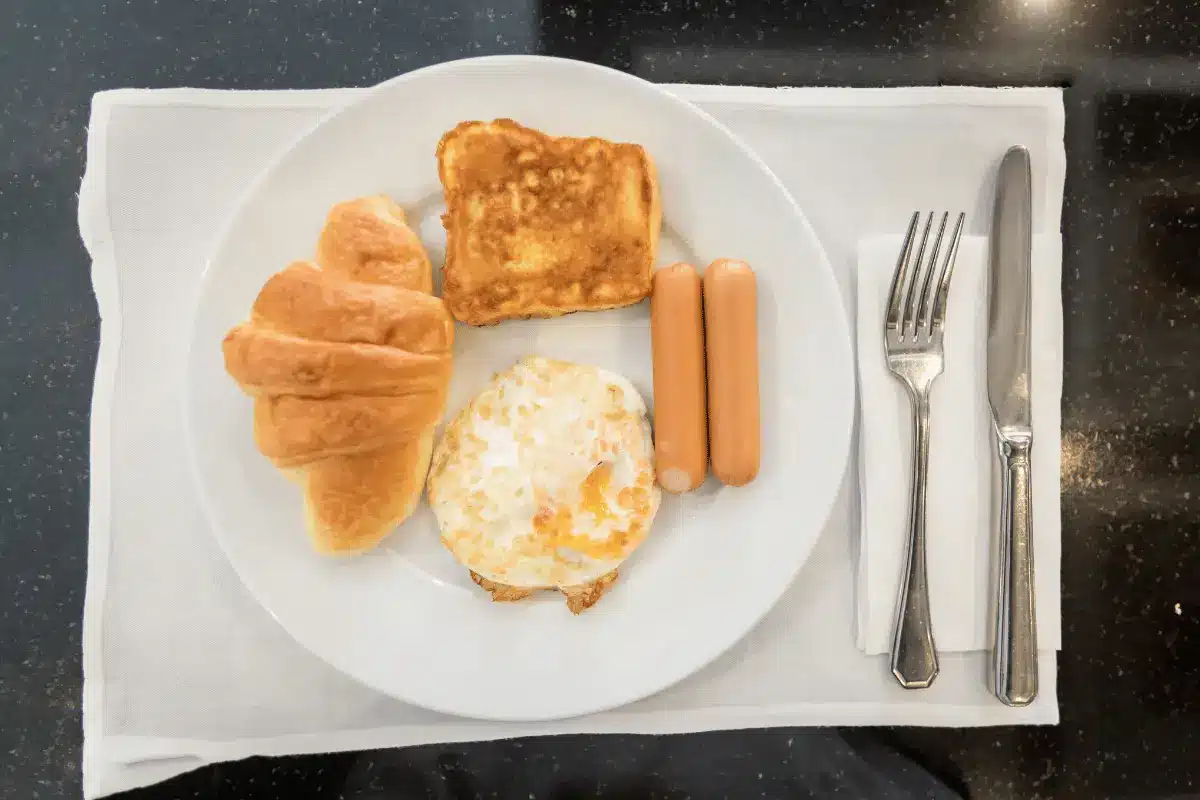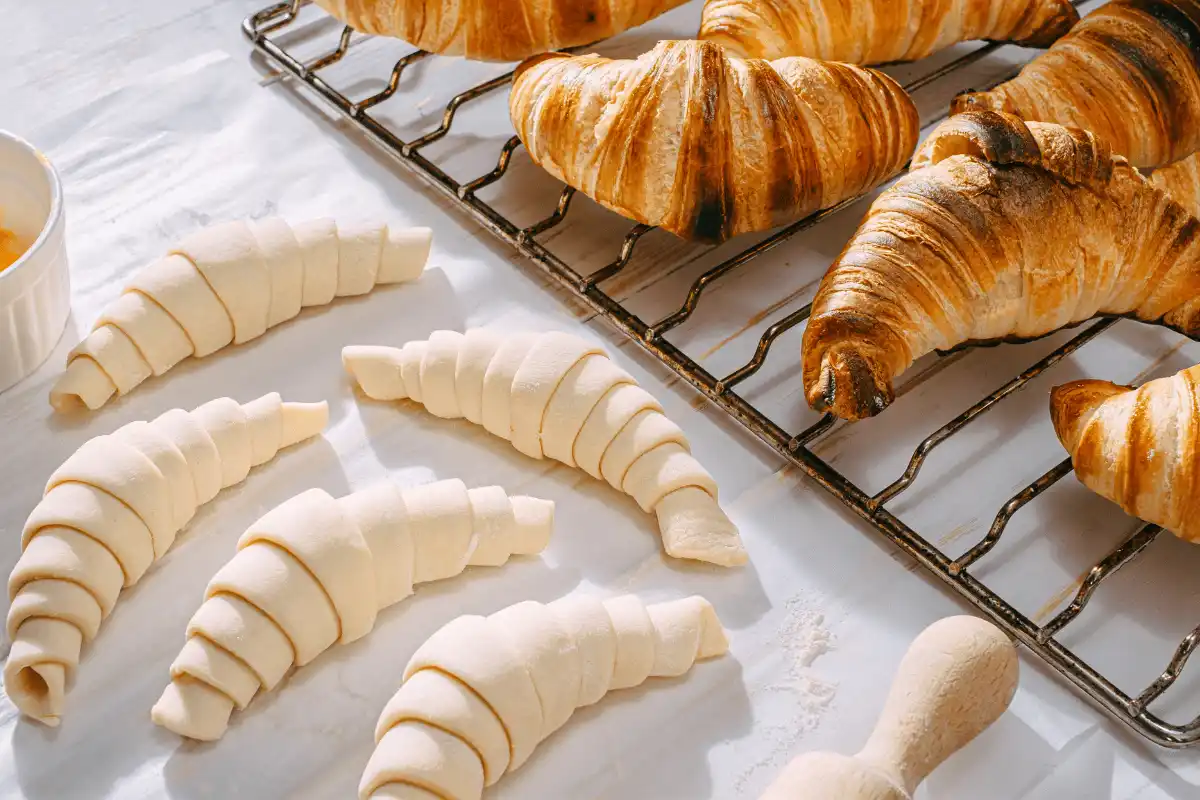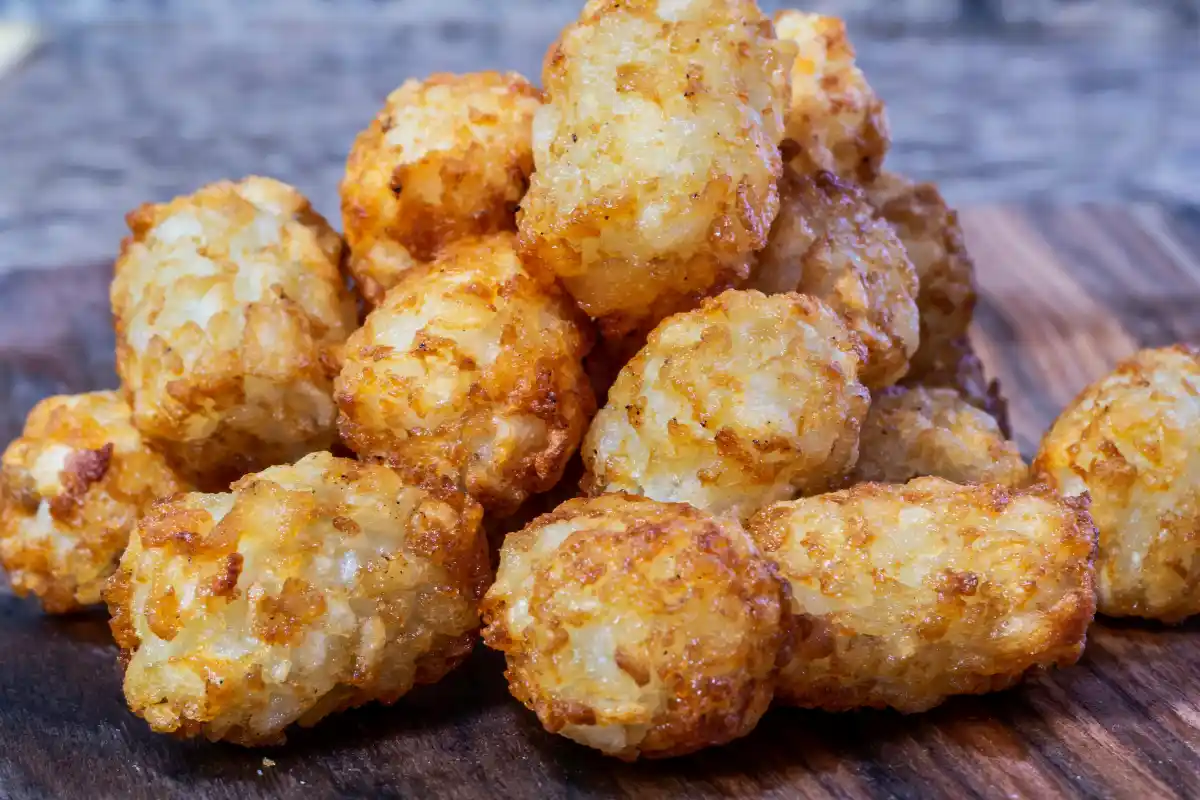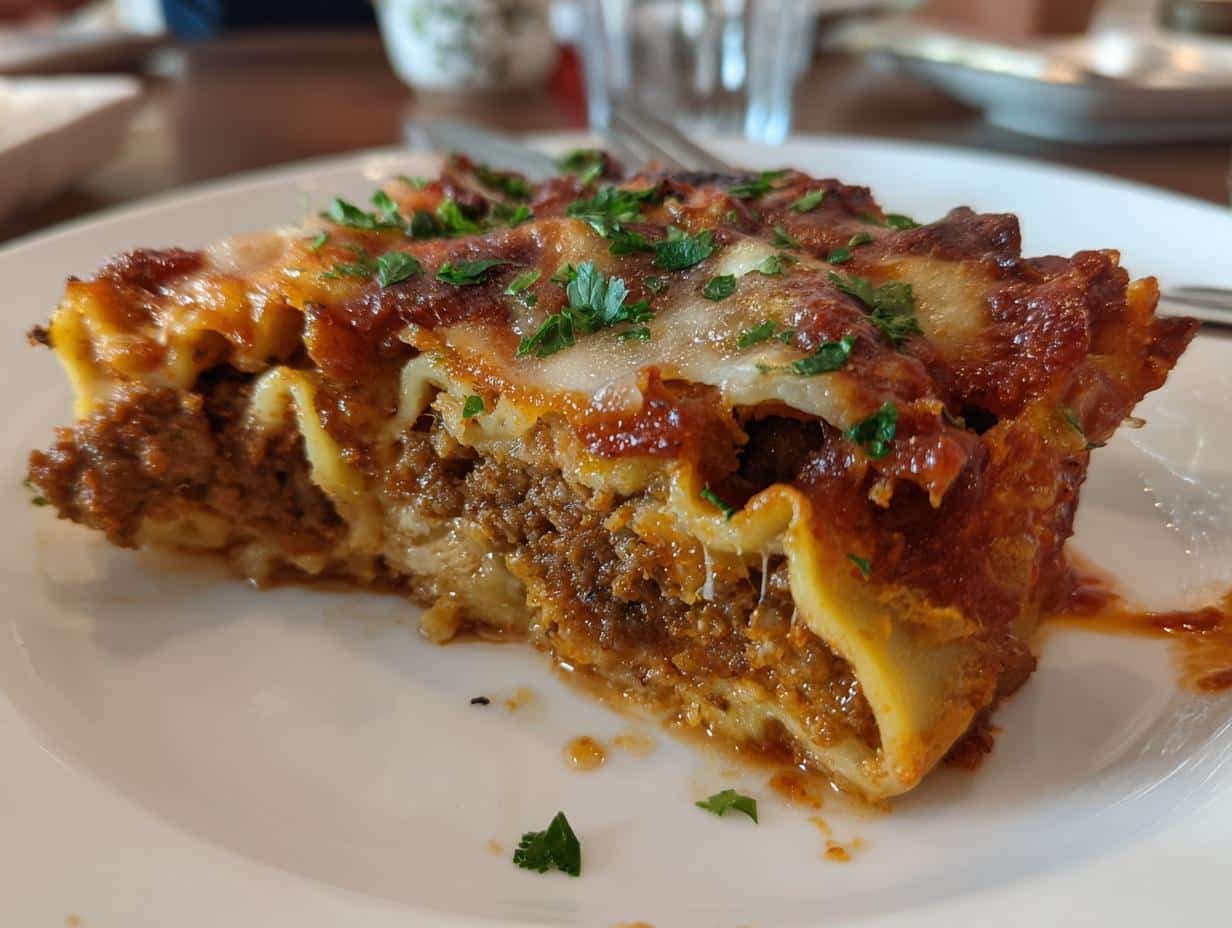In the culinary world, where tradition meets innovation, there’s a delightful pastry that’s been capturing hearts and taste buds alike: croissant toast. This article embarks on a journey to explore the essence of croissant toast, from its flaky layers to its rich, buttery flavor. We’ll dive into the art of making it, the various ways to savor it, and even touch upon its nutritional aspects. Along the way, we’ll answer some burning questions you might have about this exquisite pastry. So, whether you’re a seasoned baker, a culinary enthusiast, or simply someone who appreciates a good piece of toast, join us as we unfold the story of croissant toast.
Part 1: Introduction to Croissant Toast
Ah, croissant toast. Just the name itself conjures images of golden-brown, flaky pastries that are the epitome of breakfast luxury. But what exactly is this culinary delight? At its heart, flaky toast is a beautiful blend of the classic croissant and the humble toast, bringing together the best of both worlds in a symphony of taste and texture.
Definition and Origin
Croissant toast, in essence, is toast bread made from flaky croissant dough. The origin of the croissant itself traces back to Vienna, Austria, and later became a staple in French bakeries. Flaky toast, however, is a more recent innovation that caters to the modern palate, combining the convenience of toast with the rich, buttery layers of a traditional croissant.
Popularity and Trends
In recent years, croissant toast has seen a surge in popularity, thanks in part to social media and the growing trend of gourmet breakfasts. It’s not just a treat for the taste buds but also a feast for the eyes, making it a favorite among food bloggers and culinary aficionados alike. The versatility of flaky toast, from its use in savory sandwiches to sweet delights, has cemented its place in the hearts of those who cherish a touch of luxury in their daily lives.
So, why has flaky toast become such a beloved part of the culinary landscape? Well, for starters, it’s all about the texture. The outer layers, golden and crisp, give way to an interior that’s soft, airy, and utterly delectable. Then there’s the flavor – a rich butteriness, with just a hint of sweetness, making each bite a truly indulgent experience.
Moreover, the rise of artisanal bakeries and the increasing appreciation for handcrafted food have played significant roles in the popularity of croissant toast. It’s not just food; it’s an art form, a testament to the skill and passion of the baker.
In the next sections, we’ll delve deeper into Making Croissant Bread Guide, explore its various types and flavors, and even share some tips on how to enjoy this delightful pastry to the fullest. So, stay tuned, and let’s embark on this delicious journey together.
Part 2: The Making of Croissant Toast
Crafting the perfect flaky toast is an art that marries tradition with culinary finesse. It’s about transforming simple ingredients into something truly extraordinary. Let’s peel back the layers of this process, shall we?
Mastering Croissant Bread Baking Guide
At its core, the making of flaky toast begins with a few key ingredients: unbleached enriched flour, water, high-quality butter, a touch of sugar, yeast, and a pinch of sea salt. These ingredients, though humble on their own, come together to create the magic that is croissant toast.
The preparation process is a labor of love, starting with the mixing of the dough. Patience is key, as the dough must rest and rise, allowing the yeast to work its magic. But the real secret lies in the lamination process, where the dough is folded with layers of butter, then rolled and folded several times over. This meticulous technique is what gives the flaky toast its signature flaky texture.
Baking Techniques
When it comes to baking, there are traditional methods that have stood the test of time, and then there are modern twists that bring a new dimension to the classic flaky toast. The traditional approach involves baking at a precise temperature, ensuring that the outside becomes perfectly golden while the inside remains tender and airy.
However, modern bakers have experimented with various techniques to elevate the experience. From adding unique fillings before the final roll to adjusting the baking times for an even flakier crust, these innovations have led to an array of croissant toast variations, each more tantalizing than the last.
Tips for Perfect Flakiness
Achieving that perfect flakiness is the holy grail of croissant toast baking. Here are a few tips from the pros:
- Always use cold butter; this is crucial for creating those distinct, flaky layers.
- Don’t rush the resting process; patience allows the gluten in the dough to relax, resulting in a tender crumb.
- Be gentle when rolling out the dough; too much pressure can crush the layers you’ve worked so hard to create.
The journey from simple ingredients to the final, exquisite piece of croissant toast is a testament to the art of baking. It’s a process that requires skill, patience, and a deep appreciation for the craft. As we move forward, we’ll explore the different varieties of croissant toast and how they can be savored in countless delicious ways. Stay tuned for a feast of flavors that will inspire your next culinary adventure.
Part 3: Varieties and Flavors
The world of croissant toast is as diverse as it is delicious. With an array of varieties and flavors, there’s a croissant toast for every palate. Let’s delve into the scrumptious spectrum of options available.
Types of Croissant Toast
- Classic Butter: The quintessential croissant toast, made with layers of rich, high-quality butter, offers a simple yet unparalleled flavor. Its golden crust and tender interior set the standard for what croissant toast should be.
- Almond, Chocolate, and Other Fillings: For those who crave a bit more indulgence, croissant toast comes in a variety of filled options. Almond croissant toast, with its sweet almond paste and sliced almonds topping, is a popular choice. Chocolate croissant toast, filled with gooey, melted chocolate, is a dream come true for chocolate lovers. But the innovation doesn’t stop there; from raspberry to cream cheese fillings, the possibilities are endless.
Innovative Croissant Toast Ideas
- Savory Options: While croissant toast is often associated with sweetness, it also makes an excellent base for savory creations. Imagine a slice of croissant toast topped with creamy avocado, smoked salmon, and a sprinkle of dill. Or perhaps a croissant toast sandwich filled with ham, cheese, and a touch of mustard. The flakiness of the croissant toast adds a delightful texture to these savory treats.
- Sweet Delights: On the sweeter side, croissant toast serves as a perfect canvas for a variety of toppings. From a simple spread of Nutella to a more elaborate concoction of mascarpone cheese, fresh berries, and a drizzle of honey, croissant toast can transform into a decadent dessert or a luxurious breakfast.
The versatility of croissant toast is truly remarkable. Whether you prefer the classic butter variety or something more adventurous, there’s no denying the appeal of this flaky, buttery pastry. As we continue to explore the many facets of croissant toast, we’ll next delve into its nutritional information, shedding light on how this delightful treat fits into a balanced diet. Stay tuned for insights that might surprise you and tips on enjoying croissant toast in a health-conscious way.
Part 4: Nutritional Information
When indulging in the flaky delight that is croissant toast, it’s natural to wonder about its nutritional profile. While it’s a treat best enjoyed in moderation, understanding its health aspects can help you incorporate it into your diet more mindfully.
Health and Nutrition
At first glance, croissant toast, with its buttery layers, may not seem like the healthiest option. However, when consumed in moderation, it can fit into a balanced diet. A typical slice of croissant toast contains calories that mainly come from fats (due to the butter) and carbohydrates (from the flour). It also offers a small amount of protein.
The key to enjoying croissant toast without overindulging is portion control and balance. Pairing a slice of croissant toast with nutrient-rich toppings or sides, such as fresh fruit or a side salad, can help create a more balanced meal.
Caloric Content
The caloric content of him can vary depending on the size of the slice and the amount of butter used in the dough. On average, a medium slice can contain between 200 to 300 calories. Filled or topped varieties, especially those with sweet ingredients, may have a higher calorie count.
Is Croissant Bread Healthy?
While croissant toast is not known for its health benefits, it does contain small amounts of certain nutrients such as iron and B vitamins, thanks to the enriched flour used in its preparation. However, its high saturated fat content — again, thanks to the butter — is something to be mindful of, particularly for those watching their cholesterol levels.
To enjoy croissant toast in a healthier way, consider opting for versions made with whole wheat or spelt flour for added fiber. Additionally, choosing toppings wisely can enhance the nutritional value of your meal. For instance, adding slices of avocado can provide healthy fats, while a sprinkle of seeds or nuts can add protein and fiber.
In conclusion, while croissant toast may not be the healthiest option out there, it can certainly be part of a balanced diet when enjoyed in moderation and paired with nutritious accompaniments. As we move forward, we’ll explore serving and pairing ideas that not only elevate the taste experience but also contribute to a well-rounded meal. Stay tuned for creative ways to savor this exquisite pastry.
Part 5: Serving and Pairing Ideas
The versatility of croissant toast extends far beyond its varieties and flavors. How you serve and pair it can transform this delightful pastry into an unforgettable culinary experience. Let’s explore some creative and delicious ways to enjoy croissant toast.
How to Serve Croissant Toast
- Breakfast and Brunch Ideas: Start your day on a high note with croissant toast as the star of your breakfast or brunch. For a simple yet satisfying option, top a slice of him with a perfectly poached egg, a sprinkle of salt, and a dash of pepper. The richness of the egg yolk melds beautifully with the buttery layers of the toast. For a sweeter start, slather your croissant toast with ricotta cheese and top it with fresh berries and a drizzle of honey.
- Desserts and Snacks: it isn’t just for breakfast; it can also be a decadent dessert or a luxurious snack. Elevate your afternoon tea with croissant toast points topped with clotted cream and a dollop of your favorite jam. Or, for a dessert that’s sure to impress, layer slices of him with whipped cream and macerated strawberries for a twist on the classic strawberry shortcake.
Pairing with Drinks
- Coffee, Tea, and Beyond: The perfect drink pairing can enhance the flavors of him. A strong, freshly brewed coffee cuts through the richness of the butter, making it a classic pairing. For tea lovers, a robust black tea with a hint of milk complements the pastry’s flakiness. And for those looking for something a bit different, a rich hot chocolate provides a sweet and cozy accompaniment, especially on chilly mornings.
The possibilities for serving and pairing croissant toast are limited only by your imagination. Whether you’re enjoying it as part of a lavish breakfast, a quick snack, or a sophisticated dessert, is offers a versatile canvas for a myriad of flavors and textures. As we wrap up our exploration of him, we’ll address some frequently asked questions that might still be lingering in your mind. Stay tuned for helpful insights and tips that will enhance your him experience.
Part 6: FAQs
In our journey through the world of croissant toast, we’ve uncovered its origins, how it’s made, the varieties it comes in, its nutritional profile, and even how to serve it. Yet, there are always questions that bubble up when people delve into this delicious topic. Let’s tackle some of the most frequently asked questions about it.
What do you eat with croissant toast?
The beauty of croissant toast lies in its versatility. You can eat it plain, savoring the buttery, flaky layers on their own, or you can dress it up with a variety of toppings. For a savory twist, try it with avocado and smoked salmon, or for something sweet, a spread of almond butter and slices of banana. The possibilities are as limitless as your imagination.
What to do with Sam’s Club croissant toast?
Sam’s Club croissant toast is pre-sliced and ready to enjoy, making it a convenient option for busy mornings or when you need a quick, satisfying snack. It’s perfect for making French toast, as its thickness and texture soak up the egg mixture beautifully, resulting in a rich and decadent treat. Alternatively, use it as the base for a gourmet sandwich, layering your favorite meats, cheeses, and veggies.
How are croissants different from bread?
While both croissants and bread are staples in many diets, they differ significantly in texture, ingredients, and preparation methods. Croissants are made with a laminated dough, which involves folding butter into the dough multiple times to create hundreds of layers. This results in a pastry that’s light, airy, and flaky. Bread, on the other hand, typically has a denser texture and is made from a simpler dough that doesn’t require lamination.
Is it normal to toast a croissant?
Yes, it’s perfectly normal to toast a croissant, especially if you’re enjoying him. Toasting enhances the pastry’s natural buttery flavor and adds a delightful crunch to its outer layers. However, be mindful of the toasting time, as croissants can burn quickly due to their high butter content. A light toasting is all you need to bring out the best in your flaky toast.
As we conclude our exploration of him, it’s clear that this culinary delight has captured the hearts of food lovers worldwide. Whether you’re a fan of the classic butter variety or prefer your flaky toast filled or topped with something more adventurous, there’s no denying the charm of this flaky, buttery pastry. So, the next time you’re enjoying a slice of flaky toast, remember the artistry and tradition that go into making it, and savor every bite.
Part 7: External Links and Recommendations
- External Links (100 words)
- La Boulangerie de San Francisco – “Discover the Secrets of flaky toast”
- Whole Foods Market – “Shop Croissant Toast Varieties”
- Sally’s Baking Addiction – “Homemade Croissant Bread Recipe”
conclusion
Having journeyed through the delightful world of flaky toast, from its buttery origins to the myriad ways it can be savored, we’ve covered a vast landscape of culinary insights. This exploration has not only highlighted the versatility and richness of him but also offered practical tips and creative ideas for incorporating this exquisite pastry into your daily meals and special occasions alike.
As we conclude our comprehensive guide, it’s evident that is transcends being merely a food item; it’s a symbol of culinary artistry and innovation. Its ability to blend tradition with modern tastes, to transform simple ingredients into something truly extraordinary, speaks volumes about the creativity inherent in the world of gastronomy.
Whether you’re a seasoned chef, a home baker, or someone who simply appreciates the finer things in life, it is offers a canvas for exploration and enjoyment. Its flaky layers and rich, buttery flavor have the power to elevate the ordinary into the extraordinary, making every meal a little more special.
In embracing is, we also embrace the joy of cooking and the pleasure of eating, reminding ourselves of the beauty found in simplicity and the importance of savoring the moment. So, here’s to it—may it continue to inspire culinary adventures and bring a touch of luxury to our tables.
Thank you for joining me on this delicious journey. May your days be filled with the warmth of freshly baked pastries and the joy of sharing them with those you love. Here’s to many more culinary discoveries and the endless possibilities that await in the kitchen. Bon appétit!




